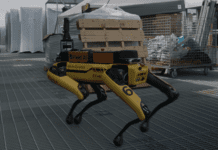This post is also available in:
 עברית (Hebrew)
עברית (Hebrew)
UC Berkeley engineers have introduced a revolutionary framework called RoVi-Aug, designed to enable robots to autonomously transfer skills across different models without human intervention. This innovative system simplifies robot training by bypassing the usual manual adjustments and enhances the robots’ ability to perform tasks more efficiently.
RoVi-Aug stands out by training robots using synthetic, augmented data that simulates diverse scenarios, including variations in camera angles and robotic systems. Unlike previous methods that rely on static datasets, RoVi-Aug adapts to new robots instantly, improving the efficiency of skill transfer and boosting success rates by up to 30%. The framework eliminates the need for test-time adjustments, which have been a bottleneck in traditional robotic learning.
One of the major challenges in robot learning is the scarcity of diverse, high-quality data. While scaling up data has shown to improve generalization in AI models for vision and language, robots face a unique challenge: gathering real-world robot data is slow and labor-intensive.
RoVi-Aug addresses this limitation by focusing on how robots interact with tasks within their data. It includes two primary components: the robot augmentation (Ro-Aug) module, which generates demonstrations from various robot types, and the viewpoint augmentation (Vi-Aug) module, which simulates different camera angles. Together, these modules create a richer and more diverse dataset that allows robots to learn more efficiently and apply skills across a range of different models and tasks.
The new framework also overcomes the limitations of previous approaches that require precise robot models and struggled with camera angle variations. RoVi-Aug doesn’t rely on known camera matrices and supports policy fine-tuning, making it more adaptable for complex tasks involving multiple robots.
While the system shows great promise, researchers note that there are still challenges to address, such as improving background handling and extending the framework to support more diverse grippers. However, RoVi-Aug represents a significant step toward creating more autonomous and versatile robots.
The team’s research was pre-published on ArXiv.


























